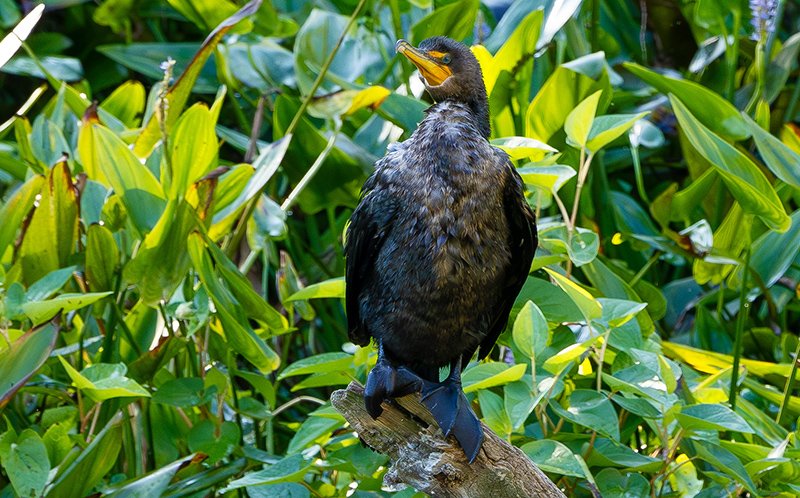Name the Cormorant
Phalacrocoracidae
by Inspector Barry Mins on October 10, 2023Hey, kids, welcome back to our series on the mysteries of created kinds. We are doing something a little different this week. I’d like you to meet an unexpected guest visiting with us at the Creation Museum . . . and help me give it a name! You see, in the last year, we have been hosting a juvenile double-crested cormorant!

For those who don’t know, cormorants are water birds in family Phalacrocoracidae. They vary from very small to medium-sized birds and, appropriately for water birds, have webbed feet. However, their feathers are not waterproof, so they must periodically leave the water to dry their feathers. They are carnivores, with a diet consisting of fish and other aquatic organisms sometimes including snakes. They are gregarious birds, getting along well with members of their own species and other water birds.
The species we believe is gracing us with its presence is Nannopterum auritum—better known as the double-crested cormorant. This is one of five subspecies of Nannopterum auritum. The Creation Museum is not normally year-round territory for these cormorants. Normally, they only come through here in the spring and summer to breed in the Great Lakes region and Canada and migrate south before winter. Thus, under normal circumstances, we might get to see these birds a few days on their way north and a few more on their way south each year.
However, our resident cormorant arrived toward the end of 2022 and stayed through the winter here, in the Creation Museum lake. We believe it is injured and cannot fly any further south. When it arrived, it was substantially smaller than it is now, and it still shows some juvenile colors. What we believe happened is it fledged north in the Great Lakes region somewhere and was on its maiden migration when it was injured. We do not know how the injury occurred or what precisely is wrong with it, but due to the injury, it was forced to abort its migration and find the nearest body of water. It found the Creation Museum lake and has been here ever since. If those suppositions are true, then it is just over a year old. That means it will most likely be with us for a while. Members of this species average an eight-year life span in the wild and have been known to live over twenty years!

Try out this fun word search!
Ask a Question
Have you ever had a question about created kinds but didn’t know who to ask? Have you ever wanted to learn more about your favorite kind? Well, now you can! You can ask me, Inspector Barry Mins, a question! Have your parents help you fill out this form, and you might get your question answered in my column! If you have any questions about created kinds, feel free to send them my way!
- © 2024 Answers in Genesis
- Privacy Policy
- Contact
- About
